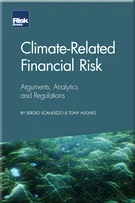Back-propagation
Back-propagation
Preface
Introduction: human-machine entanglement
Machine learning: origins
Useful tools
Decision trees
Introduction to neural networks
Back-propagation
Regularisation
Optimisation
Building neural networks
Early applications of machine learning
Interpreting neural network decisions
Predicting corporate bond returns
Deep learning networks
Applications of deep learning networks
Machine intelligence
Consciousness
The future and its challenges
Artificial intelligence and the military
Final thoughts
Appendix
Epilogue
Acknowledgements
Error back-propagation is used in artificial neural networks to adjust the weights to reduce the error. Back-propagation is the “backward propagation of errors”, since an error is computed at the output of the network and distributed backwards throughout the network’s layers. The motivation for back-propagation is to train a multilayered neural network such that it can learn the appropriate internal representations of any arbitrary mappings of input to output. The challenge of using back-propagation is the potential failure of the network to converge to the global error minimum (ie, the local minimum problem). A related problem is the potential lack of generalisation. That is, the failure to optimise out-of-sample model performance, usually owing to overfitting.
6.1 ERROR BACK-PROPAGATION
Error back-propagation is designed to control the characteristics of the gradient descent algorithm. The objective is to efficiently minimise the error in the output of the network, typically by adaptive adjustment of the learning rate. Back-propagation is performed by applying the “delta rule” in one of a variety of ways. We consider first the generalised delta rule, which forms the basis for
Copyright Infopro Digital Limited. All rights reserved.
As outlined in our terms and conditions, https://www.infopro-digital.com/terms-and-conditions/subscriptions/ (point 2.4), printing is limited to a single copy.
If you would like to purchase additional rights please email info@risk.net
Copyright Infopro Digital Limited. All rights reserved.
You may share this content using our article tools. As outlined in our terms and conditions, https://www.infopro-digital.com/terms-and-conditions/subscriptions/ (clause 2.4), an Authorised User may only make one copy of the materials for their own personal use. You must also comply with the restrictions in clause 2.5.
If you would like to purchase additional rights please email info@risk.net











